Also take care of the sea
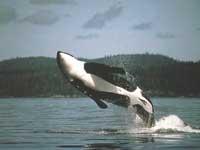
XX. Until the twentieth century, the human being has not considered ecosystems as an exhaustive heritage. The sea still seems inexhaustible, but the alarm has skyrocketed. More than 25% of the coral colonies are deteriorated and 70% of the fishing reserves have been exploited excessively or poorly. Water pollution is also a serious problem and many species sensitive to it are in danger of extinction. The capture of threatened species has not been interrupted. The conclusion is clear: the protection of the sea is essential.
More than 1,300 marine protected areas have already been created. The largest are the National Park of Greenland and the Great Barrier Reef of Australia. The first were designated in tropical or subtropical seas and near the earth. In 1935 he was appointed in Florida and 1936 in Australia and thereafter in the Philippines, Bahamas, Mexico, etc. At present, it is these areas that receive the most attention, but all over the world new projects are being launched.
Rebel ecosystem rebel ecosystem
Protecting the sea is not easy for several reasons. The first major obstacle is the administrations of the countries, which are adapting very slowly the legislation to protect the ecosystem and, in most cases, have been designed exclusively for land. The protection of the coastal environment is not usually enough, the size of the oceans demands a broader approach.

From a biological point of view, problems also arise. Protected spaces are allowed to be efficient and include full ecosystems. However, fixing the ecological limits of the sea is not easy, since the influence between the factors is more complex than on land. For example, both beings and pollutants are easily transported through currents, so it is essential to take into account the effects at a long distance. Many marine species are migratory and move with currents in search of adequate temperatures. Many times the larvae are born in one place and others grow and live. The protection of these species requires, therefore, to work in more than one area.
Difficult responsibility Difficult responsibility
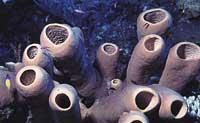
In the management of protected marine spaces we find the limit of our wisdom. It should be taken into account that, as complex ecosystems are concerned, an erroneous decision can have serious consequences. On the other hand, in general, it is open access areas and not fenced. Nature does not facilitate but we must recognize that the greatest obstacles have another origin. In some cases, the absurdity of the administrations has also aggravated the problem.
In Galapagos, for example, it is the case of the Service of National Parks of Ecuador and the Department of Fishing. The competition between them was shameful and, finally, a 1998 law entrusted responsibility to the National Parks Service.
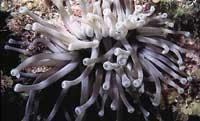
The UN (International Union for the Conservation of Nature and Natural Resources) proposes the division of protected spaces into six categories (see 26). Page. ). This division serves both for the classification of land and marine protected spaces and depends on the objectives of the exploitation. However, the classification is not general. The organization has received more than 140 terms meaning ‘protected marine space’.
The requirements to be protected spaces are determined by national legislation and there is no consensual international regulation. In Canada, for example, zones specifically assigned to fishing are designated. In the European Union no. Therefore, general objectives of common use protected areas have not been defined in all municipalities. In addition, scientists confused the situation more by asking for the protection of research spaces.
Marine peculiarities
Traditionally, the idea of banned areas has been developed by tropical fishermen. It is a simple and clear reflection, that the lack of fishing in some areas can ensure that the dam is not exhausted. In fact, the species that grow in these areas tend to spread progressively to the environment.

The locals respected some areas, although not throughout the year, in suitable seasons for a prosperous reproduction.
With the same idea, prohibited areas for fishing have been invented. These areas are unique in the area of protected areas, as opposed to in the case of indigenous management, since they are areas to be protected from many fishermen on the high seas and throughout the year. These spaces, within the classification of the NKNB, must necessarily be within the group of Integral Reserves
Designating prohibited areas for fishing is not an easy task. In places where it has been shown that it is beneficial for the fishing activity itself, they have emerged without obstacles, but in general they are faced with interests of fishermen. The advantages are long-term and the needs of fishermen are daily.

But it is not the only problem. Most of the research on this type of zones has been carried out in coral barriers, but the results cannot be considered representative of the entire sea, since the native species are very sedentary. Most oceanic ecosystems are of another type, much more dynamic. Much remains to be investigated to understand the organization and characteristics of these ecosystems. The lack of knowledge is opposed to the idea of protected spaces.

Another type of own marine spaces are the areas that want to be protected from the fuel waste of the ships. The choice of these areas is usually due to their sensitivity to contaminants. The Australian Great Barrier Reef is also part of this group, but other proposals are being published. For example, some areas of Cuba are intended to be protected within this type. A few years ago the proposal of Galapagos was also published, but it was never accepted within this group.
Finally, an administrative difficulty inherent in protected marine spaces has to do with the designation of 200 miles for each village. According to this denomination, the portion of sea outside this limit was defined by free access. Local administrations are not allowed to manage these areas.
This feature is very useful for the definition of international regulations, but it becomes an obstacle when it comes to protecting spaces. In fact, the only way to protect certain species is to protect open sea areas.
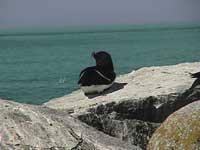
For example, to control the populations of plankton, official protection of some of these places is essential. The movements and abundance of krill depend on many factors, so it is a good marker of the state of the open sea.
In addition, plankton directly affects all species that are above the trophic chain, since it is a universal food and alters the chemical properties of the environment. Emission of diverse compounds both to water and the atmosphere. In addition, due to the ability of phytoplankton to perform photosynthesis, it has a lot to do with the variations of the oxygen level.
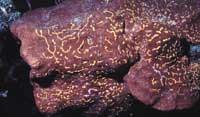
The protection of maritime zones requires, therefore, to take into account many characteristics that do not appear on land. This effort needs adequate international legislation and it is very difficult to achieve it. However, some actions are being carried out in some large areas, such as in the north-eastern Atlantic. Is the future of the sea clear or rough? Wait to be able to answer.





